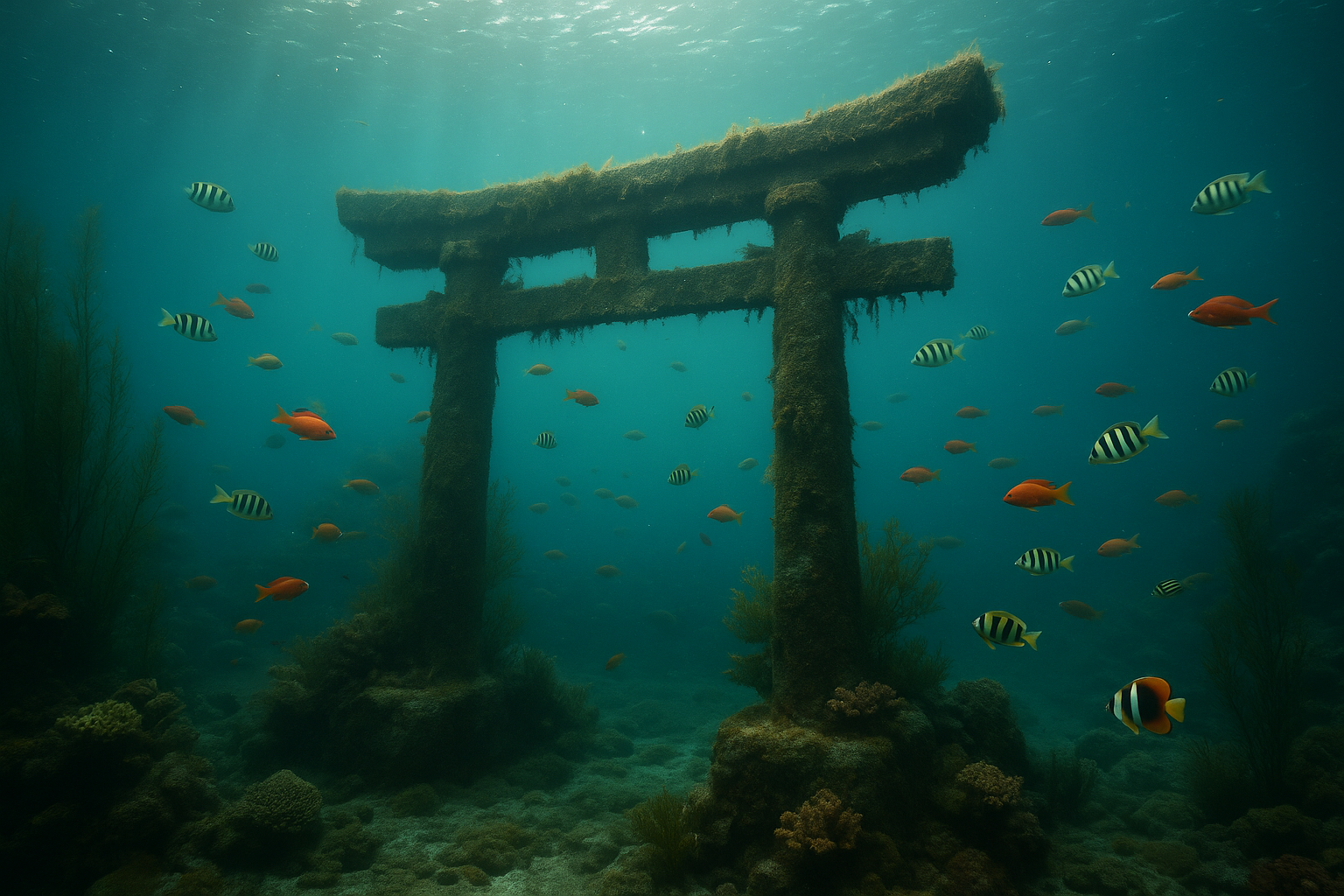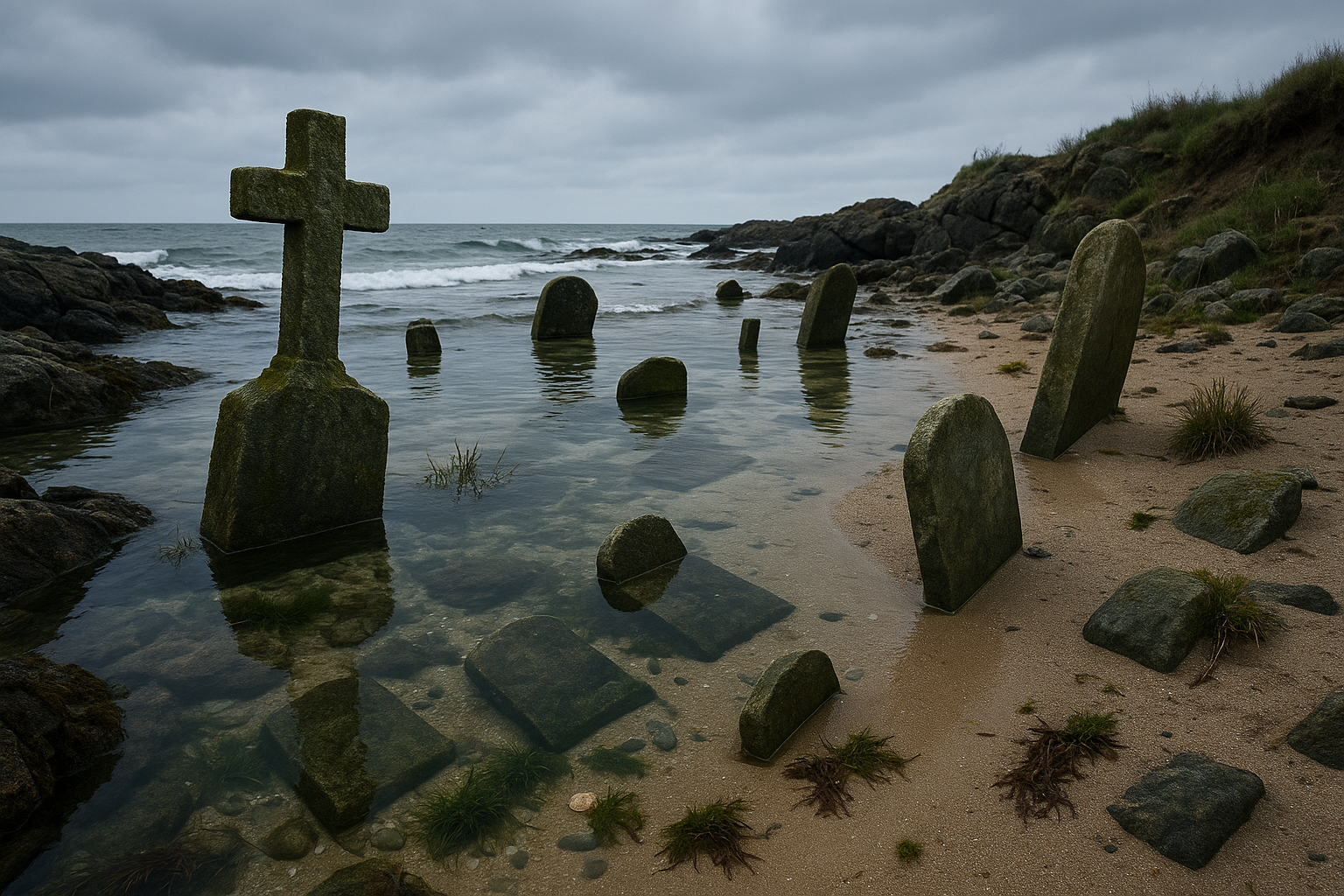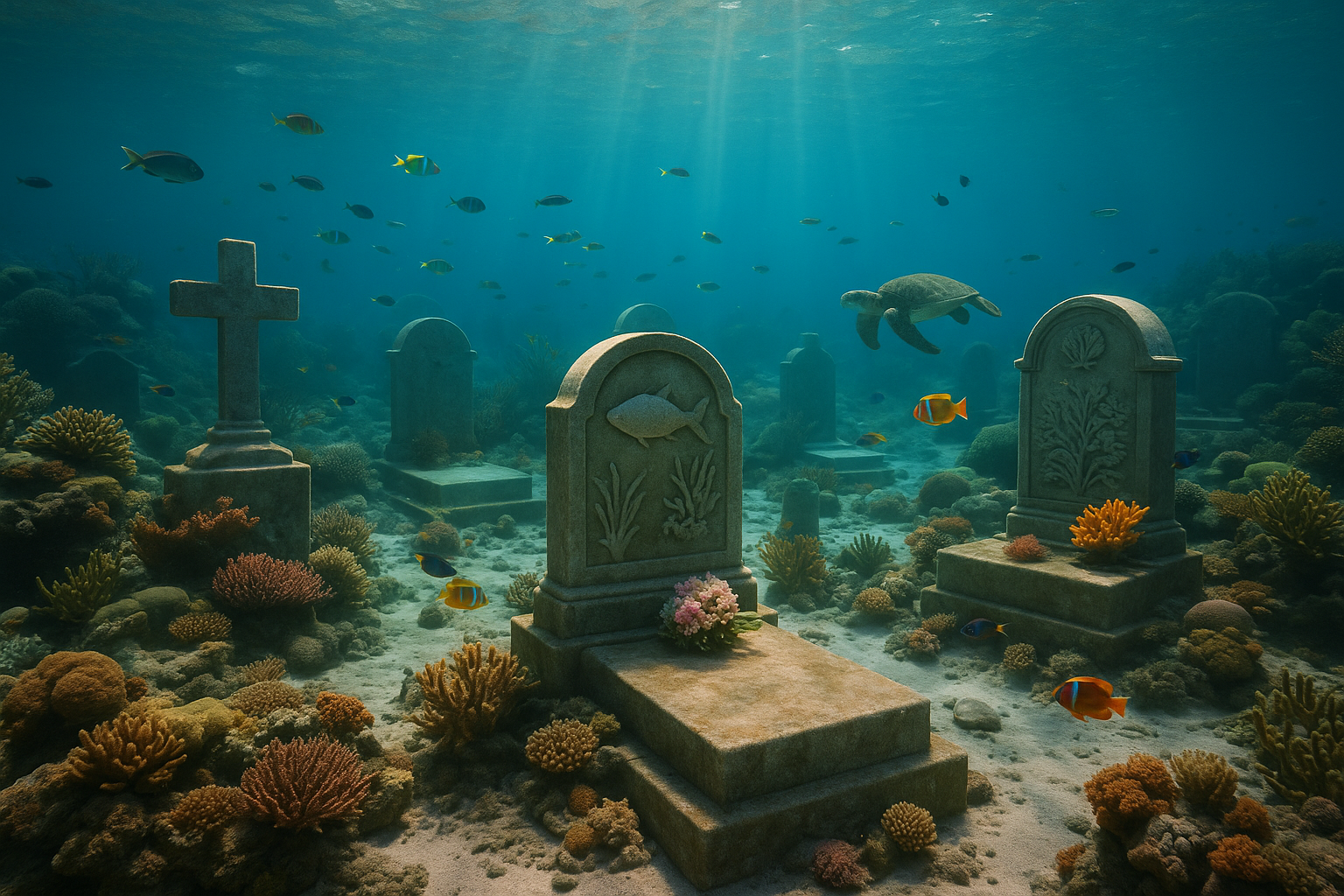Publicidade
In the annals of maritime history, few events have captured the public’s attention quite like the tragic sinking of the Costa Concordia. This catastrophic incident, which unfolded off the coast of Italy on a chilly January night in 2012, left an indelible mark on the world, sparking intense media scrutiny, public outrage, and an exhaustive investigation that sought to uncover the truth behind the shipwreck. As we embark on a deep dive into the layers of this maritime disaster, we will explore the circumstances leading up to the incident, dissect the critical moments of chaos and courage during the evacuation, and unravel the complex web of accountability and legal ramifications that followed. ⚓
At first glance, the Costa Concordia was a testament to human ingenuity—a luxurious cruise ship boasting state-of-the-art technology and offering its passengers unparalleled comfort and entertainment. Yet, beneath its glamorous façade, a series of human errors and systemic failures were quietly brewing, setting the stage for one of the most shocking maritime disasters of the 21st century. In this article, we will peel back the layers of this tragedy, beginning with a detailed exploration of the ship’s ill-fated voyage. We will scrutinize the crucial decisions made by Captain Francesco Schettino and his crew, decisions that would ultimately seal the fate of the vessel and its passengers. 🛳️
As we delve into the aftermath of the shipwreck, the narrative shifts to the tireless efforts of investigators, engineers, and legal experts who were tasked with piecing together the fragmented puzzle of events. Their quest to assign accountability traversed through courtrooms and navigated the murky waters of maritime law, revealing systemic oversights and prompting a reevaluation of safety protocols across the cruise industry. This comprehensive investigation not only highlighted the resilience of the human spirit in times of crisis but also underscored the urgent need for reform. Join us as we uncover the truths hidden beneath the waves and reflect on the lessons learned from the Costa Concordia—a sobering reminder of the delicate balance between human ambition and responsibility. 🌊

The Beginning of the Tragedy
The Costa Concordia disaster, which occurred on January 13, 2012, remains one of the most significant maritime accidents in recent history. The ship, operated by Costa Crociere, an Italian subsidiary of the Carnival Corporation, was on a Mediterranean voyage with 4,229 people onboard, including passengers and crew. What should have been a pleasant cruise turned into a nightmare when the vessel struck a rock off the coast of Isola del Giglio, Italy. This incident raised numerous questions about maritime safety, navigational decisions, and the human factors involved in such calamities.
The events leading up to the wreck began when Captain Francesco Schettino decided to perform a sail-past salute, bringing the ship dangerously close to the shoreline. This maneuver was intended to entertain passengers and salute a former Costa captain residing on the island. However, due to the ship’s proximity to the shore and the captain’s failure to adequately respond to navigational alarms, the Concordia struck a submerged rock, tearing a 50-meter gash into the hull. As water began to flood the ship, chaos ensued.
Understanding the factors that led to the Costa Concordia disaster requires a deep dive into the decisions made by the ship’s crew, the design and safety protocols of modern cruise ships, and the subsequent rescue efforts. The investigation revealed a series of human errors, coupled with technological and procedural shortcomings, that compounded the tragedy. The role of Captain Schettino was especially scrutinized, as his actions before, during, and after the collision were pivotal in determining the course of events.
Human Errors and Leadership Failures
The investigation into the Costa Concordia disaster highlighted significant human errors, particularly focusing on Captain Schettino’s decisions. His choice to deviate from the planned route was a critical factor, and it exposed vulnerabilities in the ship’s command structure. Furthermore, his delay in issuing an evacuation order and abandoning the ship prematurely were actions that drew widespread condemnation and legal repercussions.
Captain Schettino’s leadership style and decision-making processes were dissected during the investigation. It became evident that his overconfidence and disregard for established protocols played a crucial role in the disaster. Interviews with crew members revealed a lack of clear communication and coordination during the crisis, further exacerbating the situation. The failure to conduct timely passenger evacuations led to panic and confusion, complicating rescue efforts.
Navigational Challenges and Technological Shortcomings
Navigating a massive vessel like the Costa Concordia requires advanced technology and skilled personnel. However, the investigation revealed shortcomings in both areas. The ship was equipped with state-of-the-art navigation systems, including radar and electronic charts. Yet, these tools were not utilized effectively to prevent the collision. The crew’s failure to adequately monitor the ship’s position and speed in relation to the coastline was a critical oversight.
Additionally, the investigation uncovered issues with the ship’s design and safety features. While modern cruise ships are built to high safety standards, the Costa Concordia’s design did not prevent rapid flooding following the hull breach. The stability of the vessel was compromised, making evacuation efforts challenging. Furthermore, the lifeboat deployment process faced obstacles due to the ship’s listing, creating dangerous conditions for passengers and crew attempting to abandon the vessel.
In the wake of the disaster, the maritime industry reassessed the adequacy of current safety technologies and procedures. This led to advancements in ship design, emergency preparedness, and the implementation of stricter safety regulations. The aim was to ensure that similar incidents could be prevented in the future, thereby protecting lives and preserving the integrity of maritime travel.
Rescue Operations and Immediate Aftermath
The rescue operations following the Costa Concordia disaster were both heroic and chaotic. As the ship began to list dangerously, passengers and crew scrambled to abandon the vessel. The Italian Coast Guard, along with local volunteers and international aid, played a crucial role in the rescue efforts. Their prompt response undoubtedly saved lives, although the chaotic circumstances made the operation immensely challenging.
Coordination and Challenges
The coordination of rescue efforts was hampered by the initial confusion and lack of clear communication from the ship’s command. It wasn’t until more than an hour after the collision that a general evacuation was ordered. By this time, the ship had already taken on a significant amount of water, complicating the deployment of lifeboats. The listing of the vessel further exacerbated these challenges, as some lifeboats became unusable.
Despite these obstacles, rescuers worked tirelessly to evacuate passengers and crew. Helicopters and lifeboats were deployed to transport individuals to safety. The efforts of local residents, who offered shelter and assistance to survivors, were invaluable. This community spirit showcased the best of humanity amidst a tragic situation.
The Role of Technology in the Rescue
Technology played a vital role in the rescue operations, with thermal imaging cameras and sonar equipment used to locate individuals trapped inside the ship. Divers were deployed to navigate the treacherous conditions within the flooded sections of the vessel, searching for survivors. These technological tools proved essential in the success of the rescue mission, allowing for a more systematic and thorough search.
In the aftermath of the rescue, a thorough investigation was launched to determine the cause of the disaster and to hold accountable those responsible. The focus was on understanding the failures in command, communication, and technology that contributed to the tragedy. As the investigation unfolded, it became clear that a combination of human error and systemic shortcomings had led to the Costa Concordia disaster.
Legal Proceedings and Accountability
The Costa Concordia disaster resulted in extensive legal proceedings aimed at assigning accountability for the tragedy. Captain Francesco Schettino faced the brunt of legal action, charged with manslaughter, causing a shipwreck, and abandoning ship. The trial attracted significant media attention, as the public sought justice for the victims and answers to the many questions surrounding the incident.
The Trial of Captain Schettino
Captain Schettino’s trial was a focal point in the pursuit of accountability. The prosecution argued that his reckless actions and gross negligence were directly responsible for the disaster. Testimonies from survivors, crew members, and maritime experts painted a damning picture of his conduct. The defense, on the other hand, attempted to shift some of the blame onto the cruise company, citing inadequate training and support.
The court proceedings revealed detailed insights into the chain of events leading up to and following the collision. Evidence included recordings from the ship’s black box, which provided crucial information about the crew’s actions and communications during the crisis. These recordings played a significant role in shaping the trial’s outcome, ultimately leading to Schettino’s conviction and sentencing to 16 years in prison.
Broader Implications for the Cruise Industry
The legal ramifications of the Costa Concordia disaster extended beyond Captain Schettino. The incident prompted regulatory bodies and the cruise industry to reevaluate safety standards and operational protocols. Questions were raised about the industry’s practices, particularly regarding the training and certification of crew members, emergency preparedness, and passenger safety.
In response to the disaster, the International Maritime Organization (IMO) and other regulatory bodies introduced new regulations aimed at enhancing the safety of cruise ships. These measures included stricter requirements for safety drills, improved lifejacket provisions, and more rigorous inspections of vessels. The goal was to ensure that the lessons learned from the Costa Concordia tragedy would lead to a safer maritime industry.
Environmental Impact and Salvage Operations
The Costa Concordia disaster had significant environmental implications, given the vessel’s location near a protected marine area. The ship carried a substantial amount of fuel and other hazardous materials, raising concerns about potential pollution and ecological damage. Addressing these environmental risks was a crucial aspect of the response to the disaster.
Mitigating Environmental Risks
Efforts to mitigate environmental risks involved the careful removal of fuel and hazardous materials from the ship. Salvage teams worked meticulously to pump out approximately 2,380 tonnes of fuel, preventing a major ecological disaster. The process was complex and required the expertise of environmental specialists and engineers to ensure that no further harm was done to the marine ecosystem.
In addition to fuel removal, efforts were made to address the potential impact on marine life and habitats. Environmental monitoring was conducted to assess the health of the surrounding waters and to identify any adverse effects. These measures were crucial in preserving the ecological integrity of the area and preventing long-term damage.
The Salvage of the Costa Concordia
The salvage operation of the Costa Concordia was one of the largest and most complex in maritime history. The process, known as parbuckling, involved rotating the ship to an upright position and refloating it for removal. This ambitious endeavor required advanced engineering techniques and extensive planning, taking over two years to complete.
The successful salvage of the Costa Concordia was a testament to human ingenuity and determination. It demonstrated the capabilities of modern engineering and the commitment to resolving a challenging and unprecedented situation. The operation also served as a case study for future salvage efforts, providing valuable insights and lessons for the industry.
Long-Term Impact on Maritime Safety
The Costa Concordia disaster served as a catalyst for change within the maritime industry. It highlighted critical areas for improvement in safety protocols, crew training, and regulatory oversight. The lessons learned from the tragedy have had a lasting impact on maritime safety practices, shaping the future of the industry.
Enhanced Safety Regulations and Training
In the wake of the disaster, regulatory bodies and cruise lines implemented a series of changes aimed at enhancing safety. New regulations focused on improving emergency preparedness, with an emphasis on conducting regular safety drills and ensuring that all crew members are adequately trained for crisis situations. These measures aim to prevent a recurrence of the communication and coordination failures seen during the Costa Concordia incident.
The emphasis on training extends beyond emergency procedures. Crew members are now required to undergo more comprehensive training programs that cover a range of scenarios, from navigational challenges to passenger management during crises. This holistic approach to training aims to create a more resilient and capable workforce, better equipped to handle the complexities of modern maritime travel.
Technological Advancements in Maritime Safety
Technological advancements have also played a crucial role in enhancing maritime safety post-Costa Concordia. The integration of advanced navigation systems, real-time monitoring tools, and improved communication technologies have become standard practice across the industry. These innovations aim to provide crews with the information and resources needed to make informed decisions and respond effectively to emergencies.
The development of more robust safety features on new ships, such as enhanced watertight compartments and advanced stability systems, further underscores the industry’s commitment to safety. These design improvements are intended to prevent rapid flooding and improve the survivability of vessels in the event of a collision or other emergencies.
Ongoing Challenges and Future Directions
Despite the progress made since the Costa Concordia disaster, ongoing challenges remain in the pursuit of maritime safety. The industry continues to grapple with the complexities of balancing safety with the demands of commercial operations. As cruise ships become larger and more technologically advanced, the need for rigorous oversight and continuous improvement is paramount.
Future directions in maritime safety will likely focus on leveraging technology to enhance situational awareness and decision-making. The integration of artificial intelligence, predictive analytics, and autonomous systems holds the potential to revolutionize maritime operations, providing crews with unprecedented levels of support and insight.
Moreover, fostering a culture of safety within the industry is essential. This involves not only adhering to regulations but also prioritizing safety at every level of operation. By embracing a proactive and collaborative approach to safety, the maritime industry can continue to evolve and improve, ensuring that the lessons learned from the Costa Concordia tragedy lead to a safer and more secure future for all who navigate the seas.
| Aspect | Before the Disaster | After the Disaster |
|---|---|---|
| Safety Regulations | Basic compliance with existing standards | Enhanced drills, improved lifejacket provisions, stricter inspections |
| Training | Standard training programs | Comprehensive crisis and emergency management training |
| Technology | Basic navigation systems | Advanced navigation, real-time monitoring, communication tools |
For a visual understanding of the Costa Concordia disaster and its aftermath, watch this comprehensive video that delves into the events and key learnings from the incident.
- Understand the human errors that contributed to the disaster.
- Explore the technological shortcomings and their impact.
- Learn about the heroic rescue operations and the challenges faced.
- Examine the legal proceedings and accountability issues.
- Discover the long-term impact on maritime safety and industry practices.
The Costa Concordia disaster remains a poignant reminder of the complexities and risks associated with maritime travel. It underscores the importance of vigilance, preparedness, and the continuous pursuit of safety improvements. Through collective learning and adaptation, the industry can honor the memory of those affected and strive for a future where such tragedies are prevented.
Conclusion
Conclusion
In wrapping up our exploration of the investigation into the Costa Concordia shipwreck, it’s essential to reflect on the key elements that have shaped this tragic yet educational narrative. The Costa Concordia disaster, which unfolded on the night of January 13, 2012, stands as a stark reminder of the potential consequences of human error and lapses in judgment in the maritime industry. This incident, which claimed the lives of 32 individuals, has since been a pivotal case study for maritime safety, crisis management, and the interplay between technology and human decision-making.
Throughout this article, we have delved into the intricacies of the events leading up to the disaster, the immediate response efforts, and the subsequent investigations that sought to uncover the truth behind the tragedy. We began by examining the actions of Captain Francesco Schettino, whose decisions on that fateful night have been scrutinized and debated extensively. His choice to deviate from the planned route for a sail-past maneuver brought the ship dangerously close to the island of Giglio, ultimately leading to its capsizing. This decision, driven by a desire to impress, underscores the critical importance of adhering to safety protocols and respecting the established guidelines that govern maritime navigation.
The investigation into the Costa Concordia disaster highlighted several key issues, including the inadequacies in emergency preparedness and response. The chaos and confusion that ensued as the ship began to list revealed significant shortcomings in crew training and passenger safety protocols. This has led to substantial reforms within the cruise industry, aimed at enhancing safety measures and ensuring that all personnel are better equipped to handle emergencies.
Another crucial aspect of the investigation was the role of technology and its limitations. Despite the advanced navigation systems on board, the human element proved to be the weakest link. This has prompted ongoing discussions about the balance between human oversight and technological reliance in modern maritime operations. The lessons learned from the Costa Concordia incident have spurred advancements in maritime technology, with a focus on developing systems that can better assist crews in decision-making processes while maintaining rigorous standards for safety and efficiency.
The environmental impact of the shipwreck was another significant concern addressed in the investigation. The Costa Concordia, carrying vast quantities of fuel and other hazardous materials, posed a severe threat to the delicate marine ecosystem surrounding Giglio Island. The successful efforts to mitigate environmental damage and eventually remove the wreck from its resting place demonstrated the effectiveness of international cooperation and the application of innovative engineering solutions.
As we conclude this discussion, it is paramount to emphasize the broader implications of the Costa Concordia disaster for the maritime industry and beyond. This incident serves as a poignant reminder of the potential for human fallibility and the critical need for robust safety cultures across all sectors. It highlights the importance of continuous learning and adaptation in the face of adversity, encouraging stakeholders to prioritize safety above all else.
We must recognize the courage and resilience of the survivors, the dedication of the rescuers, and the efforts of those who worked tirelessly to investigate and learn from this tragedy. Their stories and experiences continue to inspire improvements in safety and crisis management, driving meaningful change that can prevent future disasters.
In closing, we encourage readers to reflect on the lessons gleaned from the Costa Concordia shipwreck and consider how they can be applied to their own lives and industries. Whether it’s advocating for stricter safety standards,
Toni Santos is a visual storyteller and maritime memory-keeper whose work navigates the haunting beauty of marine cemeteries and shipwrecks. With an eye for forgotten vessels and the silent worlds beneath the waves, Toni transforms sunken histories into visual narratives rich with mystery, loss, and the quiet passage of time.
His creative journey is anchored in a deep fascination with what the ocean hides — rusted hulls, broken figureheads, and relics of lives interrupted. Each design, illustration, or curated study Toni creates is a tribute to these submerged time capsules, blending historical detail with poetic reverence for what once sailed proudly above the surface.
With a background in handcrafted design and archival research, Toni combines artistry with investigation, reimagining the resting places of ships not as ruins, but as underwater cathedrals — places where nature and history entwine. His work evokes the solemn grandeur of decaying iron, the ghostliness of forgotten names, and the marine life that now calls these wrecks home.
As the creator behind Vizovex, Toni offers visual chronicles, curated collections, and immersive storytelling that bring shipwrecks and ocean graveyards into focus. His mission is not just to document them — but to mourn, honor, and reawaken the stories they still hold.
His work is a tribute to:
The tragic elegance of sunken ships
The stories sealed in salt and time
The silent legacy of the sea’s forgotten fleet
Whether you’re a maritime historian, a deep-sea dreamer, or someone drawn to the mysteries that rest beneath the tides, Toni invites you into a world where history doesn’t sink — it waits to be seen, one wreck, one relic, one wave-worn story at a time.





